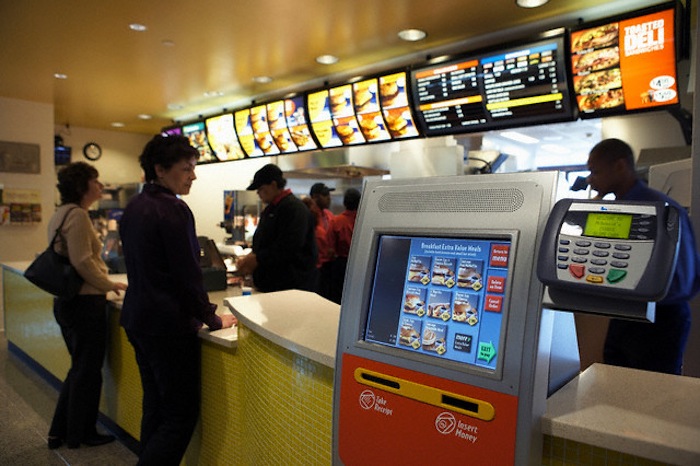
When customers are feeling hungry — maybe even a little hangry — the fewer obstacles between them and food, the better. Waiting in line? Talking to a human cashier? Too much hassle. Just get them those calories, stat.
Alright, so maybe it’s not always quite so dramatic, but it’s certainly true that customers seem more and more willing to forego human interaction in fast food and fast casual dining environments. If they happen to be one of the dramatic types when they get too hungry, having them interact with a robot instead could save some unnecessary unpleasantness.
Technology that cuts people out of fast casual is popping up all over the industry, whether it’s automating repetitive kitchen processes (remember Flippy the burger robot?) or trading in cashiers for kiosks, a trend that has hit McDonald’s, Subway and other popular fast food and fast casual settings.
Eatsa has been doing both: the front-of-house and back-of-house, taking orders through kiosks, assembling healthy quinoa bowls as ordered and dispensing them through automated machines.
Until now, Eatsa has been a standalone fast casual restaurant using its own proprietary technology. Soon, however, it will be taking Chicago-based dumpling restaurant Wow Bao to the next technological level — and that’s only the first move for the company as it shifts its focus to faster innovation and restaurant enablement.
Wow Bao accepts orders by app and by kiosk, and next month, using Eatsa’s tech, it will start serving up those steamed buns in illuminated self-service cubbies marked with the customer’s name.
According to CNET reports, the LED-lit cubbies will display both name and order status so customers can see when their orders are cooking and when they are ready to be collected. Now, this would be techy enough if it were just a single cubby, but there will be a whole wall of these illuminated cubbies so that several customers may be served simultaneously.
There was a time when such an experience would have been merely the stuff of sci-fi movies, not only because it was too technologically advanced, but also because the lack of human touch made it less desirable to customers.
That is changing as technology transforms the dining out experience, from ordering and paying at a kiosk or by tablet at the table to “dining out” at home with the help of delivery technology and services such as GrubHub, Uber EATS and others. For a growing number of customers, a lack of human touch can be a selling point instead of a deterrent, at least in fast food and fast casual settings — fine dining is, of course, a whole separate beast.
Eatsa recently ran into some trouble for trying to double dip on developing good tech and good food at the same time, leading it to close five of its seven brick-and-mortar eateries.
The company said in October that it would retain its two San Francisco restaurants for research and development purposes but would be channeling the energy previously directed at its New York, D.C. and Berkeley locations into enabling other restaurants to use Eatsa technology.
Eatsa says it is “committed to changing how people eat” by making the dining experience faster and more affordable. The company believes that trimming its footprint will enable it to innovate faster and keep its eyes on the future of food service.